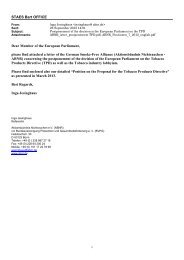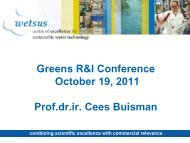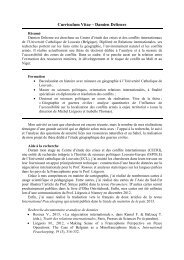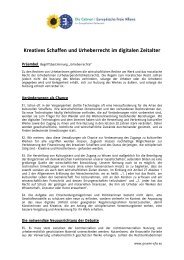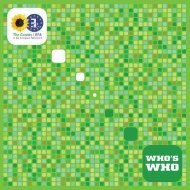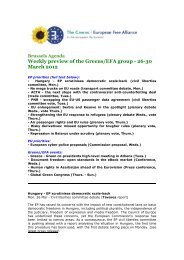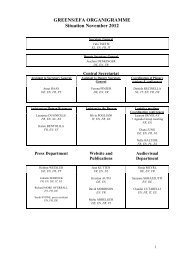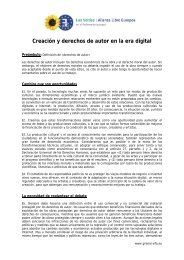Agro-Biotechnology: - The Greens | European Free Alliance
Agro-Biotechnology: - The Greens | European Free Alliance
Agro-Biotechnology: - The Greens | European Free Alliance
You also want an ePaper? Increase the reach of your titles
YUMPU automatically turns print PDFs into web optimized ePapers that Google loves.
10 | Cloned farm animals - a ‚killing application‘? | Technical development<br />
Fig 1: procedure of<br />
cloning involving<br />
cell culturing and<br />
performing<br />
transgenesis<br />
01: oocyte source<br />
02: donor animal<br />
to be clone,<br />
03: derived oocyte<br />
04: derived somatic<br />
cell<br />
05: enucleated<br />
oocyte<br />
06: culturing and<br />
propagating of the<br />
donor cells<br />
07: optionally genetic<br />
engineering of<br />
the donor cells can<br />
be performed at<br />
this stage<br />
08: fusion of nucleus<br />
of donor cell<br />
with the oocyte<br />
09: transfer of the<br />
artificial embryo<br />
into a surrogat<br />
mother<br />
10: cloned offspring<br />
<strong>The</strong> use of genetic engineering in combination with SCNT in farm animals is<br />
somehow restricted, because so far it has not been possible to establish lines of<br />
embryonic stem cells (ES) from larger animals. Nuclei from ES cells show the<br />
highest efficacy in nuclear cell transfer. As Suk et al. (2007) explain:<br />
“A different means of improving gene targeting would be to use embryonic<br />
stem (ES) cells either instead of or in conjunction with SCNT, since they are<br />
more amenable to homologous recombination than somatic cells and able to<br />
differentiate into the full range of embryonic tissues. In this approach, genetic<br />
changes could be induced into an ES cell, selected for in vitro, and then returned<br />
to the early embryo to continue their normal program of development.<br />
This is a promising area, but ES cell lines for livestock species have yet to be<br />
successfully developed.”



